new posts in all blogs
Viewing: Blog Posts Tagged with: J.R.R. Tolkien, Most Recent at Top [Help]
Results 1 - 25 of 43
How to use this Page
You are viewing the most recent posts tagged with the words: J.R.R. Tolkien in the JacketFlap blog reader. What is a tag? Think of a tag as a keyword or category label. Tags can both help you find posts on JacketFlap.com as well as provide an easy way for you to "remember" and classify posts for later recall. Try adding a tag yourself by clicking "Add a tag" below a post's header. Scroll down through the list of Recent Posts in the left column and click on a post title that sounds interesting. You can view all posts from a specific blog by clicking the Blog name in the right column, or you can click a 'More Posts from this Blog' link in any individual post.
Letters From Father Christmas. J.R.R. Tolkien. 1976/1999. 160 pages. [Source: Library]
First sentence: Dear John, I heard you ask daddy what I was like and where I lived. I have drawn me and my house forr you. Take care of the picture. I am just off now for Oxford with my bundle of toys--some for you. Hope I shall arrive in time: the snow is very thick at the North Pole tonight. Your loving Father Christmas.
Premise/plot: The earliest letter from 'Father Christmas' to the Tolkien children is 1920. The latest letter is dated 1943 to his daughter, Priscilla. The letters speak of Father Christmas' affairs--his adventures and misadventures. Little details about the Tolkiens slip through, of course. He refers to their letters in which they mention pets and toys, etc. He speaks of Polar Bear, his greatest assistant. He speaks of red elves--some. But Father Christmas has a war to fight of his own--against the goblins! (Christmas is almost sabotaged several times!)
My thoughts: I like this one. It is an interesting collection shared with readers. Original letters and pictures (illustrations) are shared. But each letter is also typed up making it easier to read. (Father Christmas has very, very shaky writing. And Polar Bear, well, English is NOT his first or even second language. And he writes with such big paws.) His longest letter is from 1932, and this features, I believe, the first mention of the GOBLINS.
My Dearest Priscilla,
I am so glad you did not forget to write to me again this year. The number of children who keep up with me seems to be getting smaller: I expect it is because of this horrible war, and that when it is over things will improve again, and I shall be as busy as ever. But at present so terribly many people have lost their homes: or have left them; half the world seems in the wrong place. And even up here we have been having troubles. I don't mean only with my stores: of course they are getting low. They were already last year, and I have not been able to fill them up, so that I have now to send what I can instead of what is asked for. But worse than that has happened.
I expect you remember that some years ago we had trouble with the Goblins; and we thought we had settled it. Well, it broke out again this autumn, worse than it has been for centuries. We have had several battles, and for a while my house was besieged. In November it began to look likely that it would be captured and all my goods, and that Christmas Stockings would all remain all over the world. Would not that have been a calamity? It has not happened--and that is largely due to the efforts of Polar Bear-- (142, December 22, 1941)
© 2016 Becky Laney of
Becky's Book Reviews

By: Catherine,
on 3/31/2016
Blog:
OUPblog
(
Login to Add to MyJacketFlap)
JacketFlap tags:
digital technologies,
J.R.R. Tolkien,
Books,
Philip Pullman,
Literature,
Videos,
fantasy,
Oxford,
lewis carroll,
His Dark Materials,
stories,
Alice in Wonderland,
Media,
lord of the rings,
*Featured,
TV & Film,
Add a tag
Lewis Carroll, J.R.R. Tolkein, and Philip Pullman are three of the many great writers to come out of Oxford, whose stories are continually reimagined and enjoyed through the use of media and digital technologies. The most obvious example for Carroll's Alice in Wonderland are the many adaptations in [...]
The post A reimagined Wonderland, Middle-earth, and material world appeared first on OUPblog.
'Course we're really talking about ponies here in this article about The Hobbit from Tor.com, but it's interesting, as are the comments. At least name some of them!
Check out A Horse-lovers Guide to The Hobbit

By: Hannah Paget,
on 10/7/2015
Blog:
OUPblog
(
Login to Add to MyJacketFlap)
JacketFlap tags:
J.R.R. Tolkien,
Books,
History,
Literature,
Poet,
Biography,
Oxford,
C.S. Lewis,
writers,
T.S. Eliot,
oup,
British,
magician,
W.H. Auden,
*Featured,
british biography,
Arts & Humanities,
Charles Wiliams,
Eagle and Child,
Grevel Lindop,
Sir Geoffrey Hill,
The Allegory of Love,
the inklings,
Add a tag
It was strikingly appropriate that Sir Geoffrey Hill should have focused his final lecture as Oxford Professor of Poetry on a quotation from Charles Williams. Not only was the lecture, in May 2015, delivered almost exactly seventy years after Williams’s death; but Williams himself had once hoped to become Professor of Poetry.
The post Charles Williams: Oxford’s lost poetry professor appeared first on OUPblog.

By: Maryann Yin,
on 1/14/2015
Blog:
Galley Cat (Mediabistro)
(
Login to Add to MyJacketFlap)
JacketFlap tags:
J.R.R. Tolkien,
J.K. Rowling,
Authors,
Publishing,
Meg Cabot,
Stephenie Meyer,
Stephen King,
F. Scott Fitzgerald,
Douglas Adams,
Haruki Murakami,
infographic,
Leo Tolstoy,
Add a tag
 Which authors do you admire most? The team at blinkbox books has created an infographic that examines the careers of several famous authors including J.K. Rowling, Stephenie Meyer, Meg Cabot, Stephen King, and Haruki Murakami. For each author that is listed on this image, their “breakthrough” novel is highlighted.
Which authors do you admire most? The team at blinkbox books has created an infographic that examines the careers of several famous authors including J.K. Rowling, Stephenie Meyer, Meg Cabot, Stephen King, and Haruki Murakami. For each author that is listed on this image, their “breakthrough” novel is highlighted.
Both Douglas Adams and J.R.R. Tolkien hit it big with their debut novels, The Hitchhiker’s Guide to the Galaxy and The Hobbit: There and Back Again. F. Scott Fitzgerald became well-known at age 30 for his third book, The Great Gatsby, while Leo Tolstoy achieved great success at age 42 with his sixth title, War & Peace. We’ve embedded the full infographic below for you to explore further—what do you think?

To honor the release of The Hobbit: The Battle of the Five Armies, film editor Joel Walden created a fan-made trailer called “The Hobbit: The Complete Journey.” The video embedded above has drawn more than 159,000 views on YouTube—what do you think?
New Line Cinema had originally planned to shoot a two-part Hobbit film adaptation. Many J. R. R. Tolkien fans have criticized Peter Jackson for stretching out The Hobbit story into a trilogy.
New Career Opportunities Daily: The best jobs in media.
In celebration of The Hobbit: The Battle of The Five Armies movie, The Colbert Report host Stephen Colbert dressed up as Bilbo Baggins, Legolas Greenleaf, and Gandalf the Grey for the cover of Entertainment Weekly. In the video embedded above, he talks about the experience.
Besides The Hobbit photos, this issue also features an essay where Colbert talks about his long-time infatuation with J.R.R. Tolkien’s books and an interview between Colbert and director Peter Jackson. Follow this link to watch a behind-the-scenes footage of the cover shoot.
New Career Opportunities Daily: The best jobs in media.
Air New Zealand has unleashed “The Most Epic Safety Video Ever Made” on their YouTube channel. The video embedded above features the airline’s new Hobbit-themed safety video with appearances from actor Elijah Wood and filmmaker Peter Jackson.
According to The Hollywood Reporter, “the video is, in itself, a sequel to the airline’s 2012 safety video, An Unexpected Briefing, which brought actors and characters from the Tolkien story onboard one of Air New Zealand’s 777-300ER planes.” Follow this link to watch An Unexpected Briefing.
New Career Opportunities Daily: The best jobs in media.

By:
Betsy Bird,
on 7/29/2014
Blog:
A Fuse #8 Production
(
Login to Add to MyJacketFlap)
JacketFlap tags:
J.R.R. Tolkien,
Goodnight Moon,
Judy Blume,
C.S. Lewis,
Comic Con,
National Book Award,
Kidlitosphere Conference,
Fusenews,
Alan Snow,
biopics,
Little Free Library,
book to film adaptations,
librarian shoes,
library clothes,
KidLitCon 2014,
literary clothes,
New York Times book review editor,
Add a tag
Hi ho. Time to round-up what Jules and I have been up to over at our Wild Things blog (book promotion for bloggers means more blogging, you see). Here’s the long and short of what you may have missed:
Whew! We’re busy little bees, aren’t we?
- Tra la! It’s coming! The greatest conference of children’s and YA literary bloggers is coming! And Liz Burns not only has the info but also the reason such an event is cool. Quoth she: “What I love about KidLitCon is it’s about the bloggers. Full stop. That is the primary purpose and mission of KidLitCon. It’s about what the bloggers care about. Oh, there may be authors and publishers there, presenting, and that can be great and amazing. But it’s not about them. They are there to support the blogging community: they are not there saying, what can the blogging community do for us.” Amen, sister. Preach! By the way, the theme this year is Blogging Diversity in Young Adult and Children’s Lit: What’s Next? Be there or be square.
- So there’s a new Children’s Book Review Editor at the New York Times and by some strange quirk of fate her name is NOT alliterative (note Julie Just, Pamela Paul, and Sarah Smith). Her name? Maria Russo. Which pretty much means I’ll be tracking her like a bloodhound at the next Eric Carle Honors event. Trouble is, we don’t wear nametags at that event so I’ll probably be the crazy lady grabbing all the women, staring intently into their eyes. Wouldn’t be the first time.
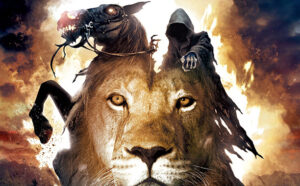 I blame Saving Mr. Banks. One little children’s writer biopic comes out where the writer isn’t seen as all kittens and sunshine (I still loathe you Miss Potter and Finding Neverland) and all hell breaks loose. Now we hear that McG is going to do a Shel Silverstein biopic on the one hand and that there are plans to examine the relationship between C.S. Lewis and J.R.R. Tolkien on the other. I’m just counting the minutes until someone tackles Margaret Wise Brown or the whole Anne-Carroll-Moore-didn’t-like-Stuart-Little story (which you just KNOW is in the works somewhere).
I blame Saving Mr. Banks. One little children’s writer biopic comes out where the writer isn’t seen as all kittens and sunshine (I still loathe you Miss Potter and Finding Neverland) and all hell breaks loose. Now we hear that McG is going to do a Shel Silverstein biopic on the one hand and that there are plans to examine the relationship between C.S. Lewis and J.R.R. Tolkien on the other. I’m just counting the minutes until someone tackles Margaret Wise Brown or the whole Anne-Carroll-Moore-didn’t-like-Stuart-Little story (which you just KNOW is in the works somewhere).
- Speaking of films, when I heard that Alan Snow’s delightful Here Be Monsters was being turned into a film called The Boxtrolls I was incredulous. That book? The one I couldn’t get kids to even look at until they made a blue paperback version? I mean I liked it (it came out in a year when sentient cheese was all the rage in children’s literature) but how long was this film in production for crying out loud? Doesn’t matter because according to iO9 it’s brilliant. Good to know.
- So Phil Nel, our ever intrepid professor with a hankering for children’s literature, went to ComicCon. Best of all, he’s willing to report his findings to us (so that we don’t have to go!). Read up on Part 1, Part 2 (my favorite for the cameo of Bananaman), Part 3, and Part 4. Phil was there promoting his Barnaby books (which he co-edited with Eric Reynolds). These include Barnaby Volume One: 1942-1943 (2013) and Barnaby Volume Two: 1944-1945 (2014).
- Did I know that Amanda Palmer wrote a song about what she owes to Judy Blume? I do now.
- This is what separates the true fangirls from the poseurs. Thanks to the CBC for the link.
- Two Little Free Libraries have sprung up near my home across the street from the Harlem branch of NYPL. I couldn’t be more pleased because they mean just one thing to me . . . a place to give away my books!!! Culling books is terribly enjoyable. It’s also part of BookRiot’s incredibly useful post 8 Tips for Moving When You Have a Ton of Books.
Two words. Bookish shoes. My personal favorites include . . .
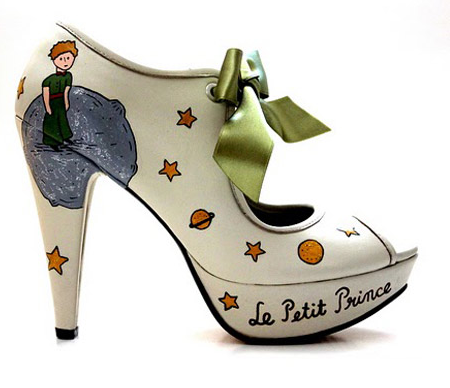


Remember, by the way, that my sister told you how to make some of these yourself. Thanks to Mom for the link.


By: Julia Callaway,
on 7/26/2014
Blog:
OUPblog
(
Login to Add to MyJacketFlap)
JacketFlap tags:
HBO,
Syfy,
oxford dictionaries,
Game of Thrones,
conlang,
David J. Peterson,
Dothraki,
Irathient,
Valyrian,
conlangers,
conlanger,
syfy’s,
*Featured,
TV & Film,
Dictionaries & Lexicography,
auxlang,
Language,
J.R.R. Tolkien,
defiance,
lord of the rings,
Tolkien,
Add a tag
By David J. Peterson
My name is David Peterson, and I’m a conlanger. “What’s a conlanger,” you may ask? Thanks to the recent addition of the word “conlang” to the Oxford English Dictionary (OED), I can now say, “Look it up!” But to save you the trouble, a conlanger is a constructed language (or conlang) maker — i.e. one who creates languages.
Language creation has been around since at least the 12th century, when the German abbess Hildegard von Bingen created her Lingua Ignota — Latin for “hidden language” — an invented vocabulary she used for writing hymns. In the centuries that followed, philosophers like Leibniz and John Wilkins would create languages that were intended to serve as grand classification systems, and idealists like L. L. Zamenhof would create languages intended to simplify international communication. All these systems focused on the basic utility of language — its ability to encode and convey meaning. That would change in the 20th century.
Tolkien: the father of modern conlanging
Before crafting the tales of Middle-Earth, J. R. R. Tolkien was a conlanger. Unlike the many known to history who came before him, though, Tolkien created languages for the pure joy of it. Professionally, he became a philologist, but he continued to work on his own languages, eventually creating his famous Lord of the Rings series as an extension of the linguistic legendarium he’d been crafting for many years. Though his written works would become more famous than his linguistic creations, his conlangs, in particular Sindarin and Quenya, would go on to inspire new generations of conlangers throughout the rest of the 20th century.
Due to the general obscurity of the practice, many conlangers remained unknown to each other until the early 1990s, when home internet use started to become more and more common. The first dedicated meeting place for conlangers, virtual or otherwise, was the Conlang Listserv (an online mailing list). Some list members came out of interest in Tolkien’s languages, as well as other large projects, like Esperanto or Lojban, but the majority came to discuss their own work, and to meet and learn from others who also created languages.
Since the founding of the original Conlang Listserv, many other meeting places have sprung up online, and through a couple of decades of regular conlanger interaction, the practice of conlanging has evolved.
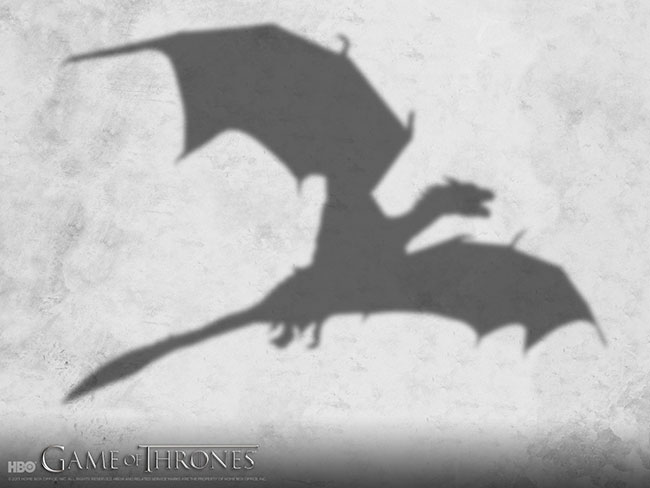
Conlang typology
Conlangs have been separated into different types since at least the 19th century. First came the philosophical languages, as discussed, then the auxiliary languages like Esperanto (also known as auxlangs), but with Tolkien emerged a new type of language: the artistic language, or artlang. At its most basic, an artlang is a conlang created for artistic purposes, but that broad definition includes many wildly divergent languages (compare Denis Moskowitz’s Rikchik to Sylvia Sotomayor’s Kēlen). Finer-grained distinctions became necessary as the community grew, and so emerged the naturalistic conlang.
This is where the languages of HBO’s Game of Thrones and Syfy’s Defiance come in. The languages I’ve created for the shows I work on come out of the naturalist tradition. The goal with a naturalistic conlang is to create a language that’s as realistic as possible. The realism of a language is grounded in the reality (fictional or otherwise) of its speakers. If the speakers are more or less human (or humanoid) and are intended to be portrayed in a realistic fashion, then their language should be as similar as possible to a natural language (i.e. a language that exists here on Earth, like Spanish, Tagalog, or Cham).
The natural languages we speak are large, but also redundant and imperfect in a uniquely human way. Conlangers have gotten pretty good at emulating them over the years, usually employing one of two different approaches. The first, which I call the façade method, is to create a language that looks like a modern natural language by replicating the various features of a modern natural language. Thus, if English has irregular plurals, such as mouse~mice, then the conlang will have irregular plurals, too, by targeting certain nouns and making their plurals irregular in some way.
The historical method: making sense of irregular plurals in Valyrian
 A contrasting approach is the method that Tolkien pioneered called the historical method. With the historical method, an ancestor language called a proto-language is created, and the desired language is evolved from it, via simulated linguistic evolution. The process takes a lot longer, but in some ways it’s simpler, since irregularities will naturally emerge, rather than having to be created by hand. For example, in Game of Thrones, the High Valyrian language Daenerys speaks differs from the Low Valyrian the residents of Slaver’s Bay speak. In fact, the latter evolved from the former. As the language evolved, it produced some natural irregularities. Consider the following nouns and their plurals from the Valyrian spoken in Slaver’s Bay:
A contrasting approach is the method that Tolkien pioneered called the historical method. With the historical method, an ancestor language called a proto-language is created, and the desired language is evolved from it, via simulated linguistic evolution. The process takes a lot longer, but in some ways it’s simpler, since irregularities will naturally emerge, rather than having to be created by hand. For example, in Game of Thrones, the High Valyrian language Daenerys speaks differs from the Low Valyrian the residents of Slaver’s Bay speak. In fact, the latter evolved from the former. As the language evolved, it produced some natural irregularities. Consider the following nouns and their plurals from the Valyrian spoken in Slaver’s Bay:
hubre “goat” hubres “goats”
dare “queen” dari “queens”
aeske “master” aeske “masters”
Given that the singular forms all end in ‘e’, one has to say at least two of the plurals presented are irregular. But why the arbitrary differences in the plural forms? It turns out it’s because the three nouns with identical singular terminations used to have very different forms in the older language, High Valyrian, as shown below:
hobres “goat” hobresse “goats”
dāria “queen” dārī “queens”
āeksio “master” āeksia “masters”
Each of these alternations is quite regular in High Valyrian. In the simulated history, a series of sound changes which simplified the ends of words produced identical terminations for each of the three words in the singular, leaving later speakers having to memorize which have irregular plurals and which regular.
Conceptualizing time
Simulated evolution applies to both grammar and the lexicon, as well. For example, natural languages often derive terminology for abstract concepts metaphorically from terminology for concrete concepts. Time, for instance, is an abstract concept that is frequently discussed using spatial terminology. How it’s done differs from language to language. In English, events that occur later in time occur after the present (where “after” derives from “aft,” a word meaning “behind”), and events that occur earlier in time occur before the present. Thus, time is conceptualized as a being standing in the present, facing the past, with the future behind them.
In Irathient, a language I created for Syfy’s Defiance, time is conceptualized vertically, rather than horizontally. The word for “after”, in temporal terms, is shei, which derives from a word meaning “above”; “before”, on the other hand, is ur, which also means “below” or “underneath”. The general metaphor that the future is up and the past is down bears out throughout the rest of the language, where if one wanted to say “Go back to what you were saying before”, the literal Irathient translation would be “Go down to what you were saying underneath”.
Ultimately, what one hears on screen sounds and feels like a natural language, regardless of whether or not one knows the work that went on behind the scenes. Since the prop used on screen is a language, though, rather than a costume or a piece of the set, the words can be recorded and analyzed at any time. Consequently, a conlang needs to be real in a way that a throne or a 700 foot wall of ice does not.
It’s still extraordinary to me that in less than 25 years, we came from a time when many conlangers were not aware that there were other conlangers to a time where our work is able to add to the authenticity of some of the best productions the big and small screen have to offer. The addition of the word “conlang” to the OED is a fitting capper to an unbelievable quarter century.
David J. Peterson is a language creator who works on HBO’s Game of Thrones, Syfy’s Defiance, and Syfy’s Dominion. You can find him on Twitter at @Dedalvs or on Tumblr.
Subscribe to the OUPblog via email or RSS.
Subscribe to only language articles on the OUPblog via email or RSS.
Subscribe to only television and film articles on the OUPblog via email or RSS.
Images: Game of Thrones Season 3 – Dragon Shadow Wallpaper and Game of Thrones Season 3 - Daenerys Wallpaper. ©2014 Home Box Office, Inc. All Rights Reserved.
The post How I created the languages of Dothraki and Valyrian for Game of Thrones appeared first on OUPblog.

What books did you read with your dad?
My dad introduced me to J. R. R. Tolkien, Sir Arthur Conan Doyle, Mark Twain and other classic authors. My grandpa had a bookshelf loaded with Reader's Digest Condensed Books and National Geographics.
I inherited my life-long love of reading, but I was lucky. The organizers of the #DadsRead Campaign shared some startling statistics:
There are studies suggesting that only 19 percent of 16-24 year-old fathers say they enjoy reading at bedtime with their children. What's more, data from Pew Research and other sources demonstrate that fathers are significantly less involved than mothers when it comes to the reading lives of their children.
continued...
New Career Opportunities Daily: The best jobs in media.
 The Bible is the most popular book of all time among Americans, according to a new survey by Harris Interactive. The company surveyed 2,234 U.S. adults online between March 12 and 17, 2014. The Bible also topped the list back in 2008, when the company last did the survey.
The Bible is the most popular book of all time among Americans, according to a new survey by Harris Interactive. The company surveyed 2,234 U.S. adults online between March 12 and 17, 2014. The Bible also topped the list back in 2008, when the company last did the survey.
Margaret Mitchell‘s Gone with the Wind, J.K. Rowling‘s Harry Potter series and J.R.R. Tolkien‘s The Lord of the Rings series also made the list.
We’ve got the entire list after the jump for you to explore further. continued…
New Career Opportunities Daily: The best jobs in media.
Newbery Medal-winning author Neil Gaiman headlined “a semi-secret late-night event” during the TED 2014 conference. Brain Pickings reports that Gaiman performed recitations of a ghost story and an essay entitled “Ghost in the Machine.”
Here’s an excerpt from Gaiman’s readings: “We have been telling each other tales of otherness, of life beyond the grave, for a long time; stories that prickle the flesh and make the shadows deeper and, most important, remind us that we live, and that there is something special, something unique and remarkable about the state of being alive. Fear is a wonderful thing, in small doses.”
Press play in the Soundcloud player embedded above to listen. In his essay, Gaiman discusses human society’s history with terrifying tales and the value of ghost stories. During the event, Gaiman also talked about why he agrees with J.R.R. Tolkien and Maurice Sendak’s idea that “there is no such thing as ‘children’s’ books” and “the ghosts of today that terrify” him.
New Career Opportunities Daily: The best jobs in media.
 J.R.R. Tolkien‘s translation Beowulf will be published a full-fledged book entitled Beowulf: A Translation and Commentary. The Guardian reports that The Lord of the Rings series author (pictured, via) completed his translation back in 1926.
J.R.R. Tolkien‘s translation Beowulf will be published a full-fledged book entitled Beowulf: A Translation and Commentary. The Guardian reports that The Lord of the Rings series author (pictured, via) completed his translation back in 1926.
Additional content within the book includes some of Tolkien’s lectures on the Old English poem. Tolkien’s son, Christopher, will serve as the editor of this project.
According to The Bookseller, HarperCollins has the UK rights and Houghton Mifflin Harcourt acquired the US rights. The publishers aim to release the finished hardcover book in May 2014.
continued…
New Career Opportunities Daily: The best jobs in media.
 The Harvard Lampoon has written a Hobbit parody entitled The Wobbit.
The Harvard Lampoon has written a Hobbit parody entitled The Wobbit.
Simon & Schuster’s Touchstone imprint will release the book in paperback format on November 26th. A reading event for this title will take place on December 12th at the Harvard Coop.
Here’s more from the press release: “When Aaron Sorkinshield and his band of Little People embark on a quest across Widdle Wearth to reclaim the hoard of Academy Awards stolen from them by the lonely Puff the Magic Dragon, senile wizard Dumbledalf suggests an unlikely and completely unqualified accomplice: Billy Bagboy, an unassuming wobbit dwelling in terrorist-riddled Wobbottabad. Along the way, the company faces internet trolls, moblins, one really big spider that must be at least an inch and a half wide, and slightly worse.”
continued…
New Career Opportunities Daily: The best jobs in media.
Have you ever tried to speak J.R.R. Tolkien‘s elvish language?
The animated video embedded above features a five-minute TED Ed lesson on “conlangs” (fantasy constructed languages). It focuses on Elvish from the Lord of the Rings trilogy, Dothraki from A Song of Ice & Fire book series, Na’vi from the 2009 Avatar movie, and Klingon from the Star Trek franchise.
continued…
New Career Opportunities Daily: The best jobs in media.
Warner Brothers has released the trailer for The Hobbit: The Desolation of Smaug, the middle of Peter Jackson‘s trilogy adaptation of J. R. R. Tolkien‘s famous fantasy novel.
The movie comes out December 13th. Star Orlando Bloom appeared on the Today show, talking about his role:
Bloom explained that despite starring in the films, he initially had no idea what his finished scenes would look like since he’s often filmed “hanging upside-down with wires on a green screen.” He said he spent “hours flailing around, stabbing at things in the air” and then when he finally saw the film discovered that “it looks better than I thought!”
New Career Opportunities Daily: The best jobs in media.
 Lord of the Rings fan Emil Johansson has created a sprawling infographic illustrating how the One Ring was controlled during the 4,860-year span of J. R. R. Tolkien‘s epic series.
Lord of the Rings fan Emil Johansson has created a sprawling infographic illustrating how the One Ring was controlled during the 4,860-year span of J. R. R. Tolkien‘s epic series.
Embedded below (click to enlarge), the chart includes a map and timeline of ring-related events mentioned in The Hobbit and the Lord of the Rings trilogy. What do you think?
Here’s more about the infographic: “This is a timeline of the events related to the One Ring created by Sauron in Second Age 1600. The years of the War of the Ring are described in more detail.”
continued…
New Career Opportunities Daily: The best jobs in media.

By: AlanaP,
on 12/18/2012
Blog:
OUPblog
(
Login to Add to MyJacketFlap)
JacketFlap tags:
Baggins,
Elvish,
From Elvish to Klingon,
invented language,
J.R.R. Tolkien,
fantasy,
language,
Dictionaries,
Tolkien,
Adams,
hobbit,
Peter Jackson,
Bilbo,
Frodo,
Michael Adams,
*Featured,
Lexicography & Language,
TV & Film,
Arts & Leisure,
Add a tag
By Michael Adams
It will be interesting to see how much of J.R.R. Tolkien’s several invented languages will appear in Peter Jackson’s The Hobbit. In a letter to his American publisher, dated 30 June 1955, Tolkien suspected there were limits to how much invented language readers would ‘stomach’ — to use his term. There are certainly limits to how much can be included in a film. American audiences, anyway, are subtitle averse.
Of Tolkien’s invented languages, Elvish receives most attention, not unreasonably, since it is illustrated most often in Tolkien’s works and most fully articulated in his manuscripts. Other languages are essential to The Lord of the Rings, however. When Gandalf reads out the delicately curved Elvish script on the One Ring in the rough-hewn Black Tongue of Mordor it represents so incongruously, Tolkien proves that some language — just the sound of it — can petrify us as surely as any Ringwraith. Tolkien’s languages aren’t suitable only for poetry or gnomic verses on rings. They also include the element of language most familiar to speakers speaking to one another every day, namely, names.
Tolkien as Philologist
When Tolkien came up with what sounded to him like a name, he would play with it a bit, experiment with its sound structure, and eventually a system of linguistically related names would emerge. Thus a family was invented, a family with relationships to other families in a mythical place, ready to take part in stories. As Tolkien explained in the letter already mentioned, “The ‘stories’ were made rather to provide a world for the languages than the reverse. To me a name comes first and the story follows.” And in his lecture on creating languages, ‘A Secret Vice’ (1931), he wrote “the making of language and mythology are related functions” and an invented language, at least one developed at length, will inevitably “breed a mythology.”

A slip written by J.R.R. Tolkien on the etymology of “walrus” during his years working for the Oxford English Dictionary. Image courtesy the Oxford University Press Archives.
Tolkien was always a philologist, whether in scholarship or fiction. He treated his fictional languages as though they were real, as though he were discovering rather than inventing them. In his scholarship, reconstruction of the sound system or grammar of languages like Old English and Old Norse was routine. For instance, he wrote ‘Appendix I: The Name “Nodens”’, in the Report on the Excavation of the Prehistoric, Roman, and Post-Roman Sites in Lydney Park, Gloucestershire, published by the Research Committee of the Society of Antiquaries of London (1932). So, it isn’t in every library, but it has been helpfully reprinted in Volume 4 of the annual journal Tolkien Studies (2007). In it, you will find passages like this one: “Although it is perhaps vain to try and disentangle from the things told of Nuada any of the features of Nodens of the Silures in Gloucestershire, it is at least highly probably that the two were originally the same. This is borne out by the isolation of the name in Keltic [sic] material, the importance of Nuada (and of Nodens), and not least by the exact phonological equation of Nōdont- with later Nuadat.” This reads very much like a passage from one or another appendix to The Lord of the Rings, and if you read it without knowing it deals with a matter of linguistic and historical fact, you might well think it was fiction.
How to Name a Baggins
Many names in Tolkien’s fiction are not invented, or, at least, not invented by him. Nearly all of the names of dwarfs in The Hobbit can be found in Dvergatal or ‘Tally of the Dwarfs’ in the Old Norse poetic Edda, as can the Old Norse precursors of Gandalf and Thorin’s nickname, Oakenshield. Hobbit names are an interesting blend of borrowed and invented items. For instance, a few males of the Baggins family of Hobbits sometimes bear real — though indisputably outmoded — personal names, such as Drogo (name popular among the French nobility c1000 CE, but since, not so much), Dudo (name of a tenth-century Norman historian and ecclesiast), and Otho (name of a Roman emperor). Other masculine names are converted from surnames or words found in natural languages, such as Balbo, Bingo, Fosco, Largo, Longo, Minto, Polo, and Ponto. But still others appear to be well and truly invented by Tolkien, such as Bilbo, Bungo, and Frodo. Perhaps they were invented to sound and look like the borrowed and converted names, but more likely those were found to fit patterns implied by the invented ones.
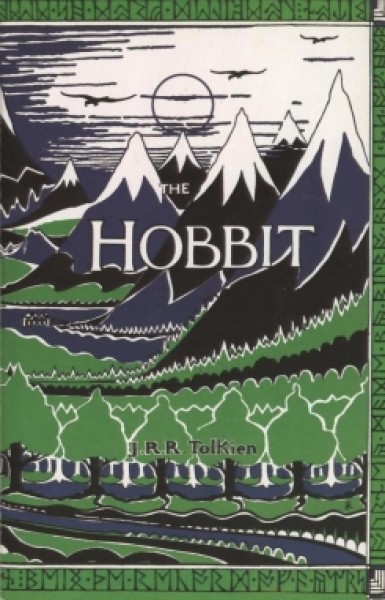
The 1937 Allen & Unwin hardback edition cover designed by Tolkien.
Many female Bagginses were given English flower names, such as Daisy, Lily, Myrtle, Pansy, Peony, and Poppy. Others had personal names common in English and other natural languages, for instance, Angelica, Dora, Linda, and Rosa. And a few bore personal names converted from surnames, like Belba, or historical but unfamiliar personal names, like Prisca (name of a Roman empress). The repurposing of such names and words as names of Hobbits may be inventive yet not count as an invention. Yet the invention is not of the names themselves — not most of them, anyway — but of linguistic relations among the names and social relations, embedded in the linguistics, among those to whom they belong.
The names have no actual relation to one another. They are borrowed from Italian and Scots and Norman French, or in those few cases made up. Tolkien brought them into relation by means of their sound shapes: the masculine names, whatever the source, and for whatever genuine etymological reason, are all two syllables and end in -o, which is proposed as a mark of the masculine name in the naming practices of Bagginses. For female Bagginses, the flower names are a fashion that obscures the way gender is marked in Baggins names: Belba, Dora, Linda, Prisca, and Rosa are marked with the contrasting feminine -a. Among all of the flower names, the -a names suggest a diminishing but tenacious historical tendency. But all language changes, as do naming practices, and any reconstruction of personal names in a historical language must account for remnant forms, anomalies, and generational trends.
There and Back Again
Other Hobbit clans have different types of names from those of the Bagginses. Brandybuck names have a distinctly Celtic shape, given the profuse -doc suffix: Gormadoc, Marmadoc, Saradoc, and, of course, Meriadoc. The Tooks prefer names from medieval romance and beast epic: Adelard, Ferumbras, Flambard, Fortinbras (rather than Armstrong, which has a quite different shape), Isengrim, and Sigismund, for instance. The Longfathers have names constructed from Anglo-Saxon elements: Hamfast and Samwise, in which -wise may mean, as it sometimes does in Anglo-Saxon, ‘sprout, stalk’. Over the generations, clan marries into clan, and the names mingle and develop new patterns: the names are the genealogical architecture of a culture.
Through alliances and friendships, Hobbit culture reticulates into the wider web of cultural relationships across Middle Earth and deep into the mythology of which the story of Middle Earth is only a part. The linguistic bases for cultural relationship and contrast are woven tightly and everywhere into the fabric of Tolkien’s fiction. In the middle of the mythological pattern, Tolkien has pricked in the -o and the -a, suffixes that say something about who the Bagginses are, or who they think they are, something that allows one Baggins to find the Ring and another to destroy it, just in time.
Michael Adams teaches English language and literature at Indiana University. In addition to editing and contributing to numerous linguistic journals, he is the author of Slang: The People’s Poetry and Slayer Slang: A Buffy the Vampire Slayer Lexicon, and he is the editor of From Elvish to Klingon: Exploring Invented Languages.
Subscribe to the OUPblog via email or RSS.
Subscribe to only lexicography and language articles on the OUPblog via email or RSS.
The post The Naming of Hobbits appeared first on OUPblog.


By: Alice,
on 12/15/2012
Blog:
OUPblog
(
Login to Add to MyJacketFlap)
JacketFlap tags:
Multimedia,
tolkien,
unwin,
The Hobbit,
oxforddnb,
odnb,
Humanities,
*Featured,
philip carter,
Audio & Podcasts,
oxford dictionary of national biography,
oxford dnb,
oxford_biography_tolkien_2011_02_16,
hobbits’,
‘hobbits’,
telling’,
J.R.R. Tolkien,
podcast,
History,
Literature,
Biography,
UK,
Add a tag
By Philip Carter
Published in 1937 The Hobbit was Tolkien’s first published work of fiction, though he had been writing on legends since at least 1915. His creation — a mythological race of ‘hobbits’, in which Bilbo Baggins takes the lead — had originally been intended for children. But from the outset Tolkien’s saga also proved popular with adults, perhaps appreciative of the hobbits’ curiously English blend of resourcefulness and respectability. The book was published by Stanley Unwin, following the recommendation of his 10-year old son, Rayner, who received a one shilling reader’s fee. Its success prompted Unwin to press for a sequel, and Tolkien now began work on The Lord of the Rings — a story that ‘grew in the telling’ at readings for the famous Inklings circle in Oxford.
[See post to listen to audio]
Or download the podcast directly.
Philip Carter is Publication Editor of the Oxford Dictionary of National Biography. Read more about J.R.R. Tolkien on the Oxford DNB website. The Oxford DNB online is freely available via public libraries across the UK. Libraries offer ‘remote access’ allowing members to log-on to the complete dictionary, for free, from home (or any other computer) twenty-four hours a day. In addition to 58,000 life stories, the ODNB offers a free, twice monthly biography podcast with over 130 life stories now available. You can also sign up for Life of the Day, a topical biography delivered to your inbox, or follow @ODNB on Twitter for people in the news.
Subscribe to the OUPblog via email or RSS.
Subscribe to only literature articles on the OUPblog via email or RSS.
The post The life of J.R.R. Tolkien appeared first on OUPblog.

“Dillicious” blogger Heath Dill wants to share his recipes for second breakfast with his project, Medium Rare and Back Again: A Tolkien Cookbook. The recipes will be derived from several of J.R.R. Tolkien works, from The Hobbit to The Lord of the Rings trilogy.
Dill has raised more than $14,000 on Kickstarter to give him time to research, cook, photograph, and write 30 recipes for this book. He hopes to make the online version free and to have a print edition available as well. We’ve embedded a video about the project above–what do you think?
Here’s more about the project: “These recipes will cover different parts of Tolkien’s world – light and delicate Elvish recipes like lembas bread, stout roasted Dwarven fare, hearty Hobbit pies and stews, as well as a few oddball recipes like Balrog Wings. Those that I’ve already blogged about – I’ll be doing refined versions of those, as I’ve learned how to make them even better since then!”
continued…
New Career Opportunities Daily: The best jobs in media.
 Audible has released the first unabridged audiobook version of J.R.R. Tolkien‘s Lord of the Rings trilogy, a staggering 54 hours and nine minutes of listening time.
Audible has released the first unabridged audiobook version of J.R.R. Tolkien‘s Lord of the Rings trilogy, a staggering 54 hours and nine minutes of listening time.
The series is read by Rob Inglis, the actor who narrated audiobooks for Ursula K. Le Guin‘s The Earthsea Cycle. Inglis also narrated the unabridged audiobook for Tolkien’s The Hobbit, an 11-hour listening experience.
Here’s more from the release: “Each of these audiobooks is also Whispersync for Voice-ready, which means that if you buy or already own the Kindle version of The Hobbit, The Fellowship of the Ring, The Two Towers or The Return of the King, you can now effortlessly switch back and forth between reading and listening to the series that has captivated millions of readers and moviegoers—without losing your place.”
New Career Opportunities Daily: The best jobs in media.
 HarperCollins’ UK division will publish J.R.R. Tolkien‘s previously unpublished epic poem, “The Fall of Arthur.” In this work, Tolkien imagines how the legendary King Arthur spent the last days of his life.
HarperCollins’ UK division will publish J.R.R. Tolkien‘s previously unpublished epic poem, “The Fall of Arthur.” In this work, Tolkien imagines how the legendary King Arthur spent the last days of his life.
Tolkien’s son, Christopher Tolkien, edited the poem and wrote three essays about the literary world of King Arthur for this book. According to Examiner.com, this title will be published in May 2013.
The Guardian has more: “Running to more than 200 pages, Tolkien’s story was inspired by Geoffrey of Monmouth and Thomas Malory‘s tales of King Arthur, and is told in narrative verse. Set in the last days of Arthur’s reign, the poem sees Tolkien tackling the old king’s battle to save his country from Mordred the usurper, opening as Arthur and Gawain go to war.”
continued…
New Career Opportunities Daily: The best jobs in media.
The new trailer for The Hobbit: An Unexpected Journey has been released.
If you visit the movie website, you can actually create your own version of the trailer to share with other fantasy fans on Twitter, Facebook, Pinterest, Tumblr or Google+. Using some extra footage, you can create a trailer ending that features Gollum, Gandalf, Bilbo or Sting or dwarves.
In July, director Peter Jackson revealed today that his adaptation of J. R. R. Tolkien‘s single book will be a trilogy. Do you think there is enough material to sustain three films?
New Career Opportunities Daily: The best jobs in media.

Over at SlackStory, artist Oliver Miller has created 8-bit covers for famous books, turning classic novels into pixel-paintings that look like video games from the 1980s.
We’ve embedded Miller’s cover for J.R.R. Tolkien‘s The Two Towers above, what do you think about his computerized take on the fantasy novel? The image above built upon Wizard by Radpants at Make Pixel Art and Towers by Mildtoast at Make Pixel Art. If you like his 8-bit art, Miller also illustrated the first lines of some famous short stories.
Here’s more from the artist: “I selected the novels above, not as a list of the Greatest Novels of All Time, or as a list of My Favorite Novels of All Time, but because they were (mostly) books that I love whose covers I knew how to illustrate. Full confession: I have not read An American Tragedy, and I think that Theodore Dreiser is a boring writer. I just liked the title. And I started reading Moby-Dick (“Call me Ishmael”) and Gravity’s Rainbow (“A screaming comes across the sky”) but I did not finish reading them. Someday I will finish reading them. I read all the others.”
New Career Opportunities Daily: The best jobs in media.
View Next 17 Posts



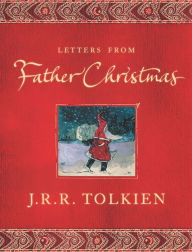


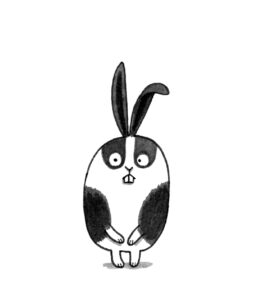





 A contrasting approach is the method that Tolkien pioneered called the historical method. With the historical method, an ancestor language called a proto-language is created, and the desired language is evolved from it, via simulated linguistic evolution. The process takes a lot longer, but in some ways it’s simpler, since irregularities will naturally emerge, rather than having to be created by hand. For example, in Game of Thrones, the High Valyrian language Daenerys speaks differs from the Low Valyrian the residents of Slaver’s Bay speak. In fact, the latter evolved from the former. As the language evolved, it produced some natural irregularities. Consider the following nouns and their plurals from the Valyrian spoken in Slaver’s Bay:
A contrasting approach is the method that Tolkien pioneered called the historical method. With the historical method, an ancestor language called a proto-language is created, and the desired language is evolved from it, via simulated linguistic evolution. The process takes a lot longer, but in some ways it’s simpler, since irregularities will naturally emerge, rather than having to be created by hand. For example, in Game of Thrones, the High Valyrian language Daenerys speaks differs from the Low Valyrian the residents of Slaver’s Bay speak. In fact, the latter evolved from the former. As the language evolved, it produced some natural irregularities. Consider the following nouns and their plurals from the Valyrian spoken in Slaver’s Bay: The Bible is the most popular book of all time among Americans, according to a new survey by Harris Interactive. The company surveyed 2,234 U.S. adults online between March 12 and 17, 2014. The Bible also topped the list back in 2008, when the company last did the survey.
The Bible is the most popular book of all time among Americans, according to a new survey by Harris Interactive. The company surveyed 2,234 U.S. adults online between March 12 and 17, 2014. The Bible also topped the list back in 2008, when the company last did the survey. J.R.R. Tolkien‘s translation Beowulf will be published a full-fledged book entitled Beowulf: A Translation and Commentary.
J.R.R. Tolkien‘s translation Beowulf will be published a full-fledged book entitled Beowulf: A Translation and Commentary.  The Harvard Lampoon has written a Hobbit parody entitled The Wobbit.
The Harvard Lampoon has written a Hobbit parody entitled The Wobbit.


 Audible has released the first unabridged audiobook version of J.R.R. Tolkien‘s
Audible has released the first unabridged audiobook version of J.R.R. Tolkien‘s  HarperCollins’ UK division
HarperCollins’ UK division 
This sounds like a nice little compilation that I might enjoy. I haven't read nearly the Christmas books that I would have liked this year.
This is a wonderful book which we bought for our children. And now look forward to reading to our grandchildren.
What fun! I had no idea that Tolkien did this.